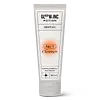What's inside
What's inside
 Key Ingredients
Key Ingredients

 Benefits
Benefits

 Concerns
Concerns

 Ingredients Side-by-side
Ingredients Side-by-side

Aloe Barbadensis Leaf Water
MaskingCocamidopropyl Betaine
CleansingAcrylates Copolymer
Sodium Chloride
MaskingPropylene Glycol
HumectantHydroxypropyl Methylcellulose
Emulsion StabilisingCetyl Alcohol
EmollientStearyl Alcohol
EmollientPotassium Cocoyl Glycinate
DMDM Hydantoin
PreservativeTocopheryl Acetate
AntioxidantPotassium Hydroxide
BufferingCurcuma Longa Rhizome Extract
Skin ConditioningPotassium Cocoate
EmulsifyingTetrasodium EDTA
BHT
AntioxidantButylene Glycol
HumectantChamomilla Recutita Flower Extract
MaskingSodium Lauroyl Lactylate
Emulsifying1,2-Hexanediol
Skin ConditioningPhenoxyethanol
PreservativeCeramide NP
Skin ConditioningCeramide AP
Skin ConditioningPhytosphingosine
Skin ConditioningCholesterol
EmollientXanthan Gum
EmulsifyingCarbomer
Emulsion StabilisingPropolis Extract
Skin ConditioningCeramide EOP
Skin ConditioningAloe Barbadensis Leaf Water, Cocamidopropyl Betaine, Acrylates Copolymer, Sodium Chloride, Propylene Glycol, Hydroxypropyl Methylcellulose, Cetyl Alcohol, Stearyl Alcohol, Potassium Cocoyl Glycinate, DMDM Hydantoin, Tocopheryl Acetate, Potassium Hydroxide, Curcuma Longa Rhizome Extract, Potassium Cocoate, Tetrasodium EDTA, BHT, Butylene Glycol, Chamomilla Recutita Flower Extract, Sodium Lauroyl Lactylate, 1,2-Hexanediol, Phenoxyethanol, Ceramide NP, Ceramide AP, Phytosphingosine, Cholesterol, Xanthan Gum, Carbomer, Propolis Extract, Ceramide EOP
Centella Asiatica Extract
CleansingGlycerin
HumectantDiglycerin
Humectant1,2-Hexanediol
Skin ConditioningButylene Glycol
HumectantNiacinamide
SmoothingWater
Skin ConditioningPolyglyceryl-3 Distearate
EmulsifyingCaprylic/Capric Triglyceride
MaskingNeopentyl Glycol Diheptanoate
EmollientIsostearyl Isostearate
EmollientPentaerythrityl Tetraisostearate
EmollientHydrogenated Poly(C6-14 Olefin)
EmollientHeptyl Undecylenate
EmollientLactobacillus/Centella Asiatica Extract Ferment Filtrate
Skin ConditioningBis-Diglyceryl Polyacyladipate-2
EmollientGlyceryl Stearate
EmollientC14-22 Alcohols
Emulsion StabilisingCetearyl Alcohol
EmollientButyrospermum Parkii Butter
Skin ConditioningPolyglyceryl-2 Stearate
EmulsifyingSodium Acrylate/Sodium Acryloyldimethyl Taurate Copolymer
Emulsion StabilisingGlyceryl Stearate Citrate
EmollientArginine
MaskingStearyl Alcohol
EmollientPolyisobutene
C12-20 Alkyl Glucoside
EmulsifyingSqualane
EmollientSodium Surfactin
CleansingSodium Polyacrylate
AbsorbentAcrylates/C10-30 Alkyl Acrylate Crosspolymer
Emulsion StabilisingCarbomer
Emulsion StabilisingHydroxystearic Acid
CleansingEthylhexylglycerin
Skin ConditioningAdenosine
Skin ConditioningHydrogenated Lecithin
EmulsifyingSorbitan Oleate
EmulsifyingCaprylyl/Capryl Glucoside
CleansingMacadamia Ternifolia Seed Oil
EmollientSodium Hyaluronate
HumectantMoringa Oleifera Seed Oil
EmollientSodium Phytate
Ceramide NP
Skin ConditioningDextrin
AbsorbentTheobroma Cacao Extract
Skin ConditioningGlyceryl Acrylate/Acrylic Acid Copolymer
HumectantPolyglyceryl-10 Myristate
Skin ConditioningGlucose
HumectantStearic Acid
CleansingPhytosphingosine
Skin ConditioningMadecassic Acid
Skin ConditioningAsiaticoside
AntioxidantSucrose Distearate
EmollientAsiatic Acid
Skin ConditioningLauric Acid
CleansingPhytosterols
Skin ConditioningPolyglutamic Acid
Skin ConditioningCentella Asiatica Extract, Glycerin, Diglycerin, 1,2-Hexanediol, Butylene Glycol, Niacinamide, Water, Polyglyceryl-3 Distearate, Caprylic/Capric Triglyceride, Neopentyl Glycol Diheptanoate, Isostearyl Isostearate, Pentaerythrityl Tetraisostearate, Hydrogenated Poly(C6-14 Olefin), Heptyl Undecylenate, Lactobacillus/Centella Asiatica Extract Ferment Filtrate, Bis-Diglyceryl Polyacyladipate-2, Glyceryl Stearate, C14-22 Alcohols, Cetearyl Alcohol, Butyrospermum Parkii Butter, Polyglyceryl-2 Stearate, Sodium Acrylate/Sodium Acryloyldimethyl Taurate Copolymer, Glyceryl Stearate Citrate, Arginine, Stearyl Alcohol, Polyisobutene, C12-20 Alkyl Glucoside, Squalane, Sodium Surfactin, Sodium Polyacrylate, Acrylates/C10-30 Alkyl Acrylate Crosspolymer, Carbomer, Hydroxystearic Acid, Ethylhexylglycerin, Adenosine, Hydrogenated Lecithin, Sorbitan Oleate, Caprylyl/Capryl Glucoside, Macadamia Ternifolia Seed Oil, Sodium Hyaluronate, Moringa Oleifera Seed Oil, Sodium Phytate, Ceramide NP, Dextrin, Theobroma Cacao Extract, Glyceryl Acrylate/Acrylic Acid Copolymer, Polyglyceryl-10 Myristate, Glucose, Stearic Acid, Phytosphingosine, Madecassic Acid, Asiaticoside, Sucrose Distearate, Asiatic Acid, Lauric Acid, Phytosterols, Polyglutamic Acid
 Reviews
Reviews

Ingredients Explained
These ingredients are found in both products.
Ingredients higher up in an ingredient list are typically present in a larger amount.
1,2-Hexanediol is a synthetic liquid and another multi-functional powerhouse.
It is a:
- Humectant, drawing moisture into the skin
- Emollient, helping to soften skin
- Solvent, dispersing and stabilizing formulas
- Preservative booster, enhancing the antimicrobial activity of other preservatives
Butylene Glycol (or BG) is used within cosmetic products for a few different reasons:
Overall, Butylene Glycol is a safe and well-rounded ingredient that works well with other ingredients.
Though this ingredient works well with most skin types, some people with sensitive skin may experience a reaction such as allergic rashes, closed comedones, or itchiness.
Learn more about Butylene GlycolCarbomer is a polymer of acrylic acid. Its main role is to create a gel consistency.
A high amount of carbomer can cause pilling or balling up of products. Don't worry, most products contain 1% or less of carbomer.
Ceramide NP is a type of ceramide and formally known as ceramide 3.
Ceramides are intercellular lipids naturally found in our skin that bonds dead skin cells together to create a barrier. They are known for their ability to hold water and thus are a great ingredient for dry skin.
Ceramides are an important building block for our skin barrier. A stronger barrier helps the skin look more firm and hydrated. By bolstering the skin ceramides act as a barrier against irritating ingredients. This can help with inflammation as well.
If you would like to eat ceramides, sweet potatoes contain a small amount.
Read more about other common types of ceramides here:
Ceramide AP
Ceramide EOP
Phytosphingosine is a phospholipid naturally found in our skin as a building block for ceramides.. It helps moisturize, soothe, and protect skin.
Phytosphingosine contributes to your skin's natural moisturizing factor (NMF). The NMF is responsible for hydration, a strong barrier, and plasticity. Our NMF decreases with age. Increasing NMF leads to more healthy and hydrated skin.
Studies show products formulated with NMF ingredients help strengthen our skin's barrier. Having a healthy skin barrier reduces irritation and increases hydration. Our skin barrier is responsible for having plump and firm skin. It also helps protect our skin against infection, allergies, and inflammation.
Fun fact: Phytosphingosine is abundant in plants and fungi.
More ingredients that help boost collagen in skin:
Learn more about PhytosphingosineStearyl Alcohol is a type of fatty alcohol from stearic acid. It is a white, waxy compound used to emulsify ingredients.
Fatty Alcohols are most often used as an emollient or to thicken a product. Emollients help soothe and hydrate the skin by trapping moisture.
They are usually derived from natural fats and oils and therefore do not have the same drying or irritating effect as solvent alcohols. FDA allows products labeled "alcohol-free" to have fatty alcohols.
Learn more about Stearyl Alcohol